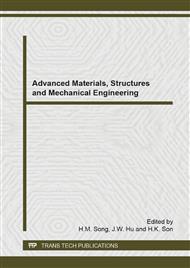p.80
p.85
p.89
p.95
p.104
p.112
p.117
p.122
p.128
Fatigue Evaluation of Autofrettaged Thick-Walled Cylinders with a Radial Cross-Bore
Abstract:
The fatigue life of autofrettaged thick-walled cylinders with a radial cross-bore is investigated by applying inelastic finite element analysis with cyclic pressure loading. A non-linear kinematic hardening model considering bauschinger effect is used for determining cyclic plastic strain ranges in fatigue evaluations. A macro is written in ANSYS to calculate the equivalent alternating stress intensity, based on the ASME Boiler and Pressure Vessel Code. For a specific cyclic load level, a distinct optimum autofrettage pressure is identified by plotting autofrettage pressure against the equivalent alternating stress intensity and the number of cycles from design fatigue data. The optimum autofrettage pressure was found in the range of 80.5%-92.5% of limit pressure. The hydrotest had little influence on the fatigue life when the thick-walled cylinder was autofrettaged with an optimum autofrettage pressure.
Info:
Periodical:
Pages:
104-111
Citation:
Online since:
September 2014
Authors:
Price:
Сopyright:
© 2014 Trans Tech Publications Ltd. All Rights Reserved
Share:
Citation:


